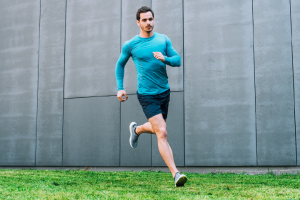
When it comes to cardiovascular fitness, High-Intensity Interval Training (HIIT) has emerged as a powerful and efficient exercise method. HIIT involves short bursts of intense exercise followed by brief recovery periods. This training approach has gained popularity due to its ability to improve cardiovascular health, enhance endurance, and maximize calorie burn in a shorter amount of time. In this comprehensive article, we will explore the benefits of HIIT for cardiovascular health, understand the science behind its effectiveness, and learn how to incorporate it into your fitness routine. By incorporating existing technology, real-life examples, and insightful quotes from notable figures, we will provide you with the knowledge and motivation to embrace HIIT for optimal cardiovascular fitness.
I. Understanding the Importance of Cardiovascular Health
The Role of Cardiovascular Fitness
Cardiovascular health is crucial for overall well-being. A strong cardiovascular system efficiently transports oxygen and nutrients to the body’s tissues and organs, supports healthy blood pressure, and improves overall endurance. Regular cardiovascular exercise is key to maintaining and improving heart health.
The Impact of Sedentary Lifestyles
Sedentary lifestyles and lack of physical activity have contributed to the rise of cardiovascular diseases. Incorporating cardiovascular exercise, such as HIIT, into our routines can counteract the negative effects of sedentary behavior and promote a healthier heart.
II. The Science behind HIIT and Cardiovascular Health
HIIT and Heart Rate Response
During HIIT, the heart rate increases significantly during the intense exercise intervals. This elevated heart rate stimulates the cardiovascular system, making the heart work harder to pump blood and oxygen to the muscles. These repeated surges in heart rate and subsequent recovery periods lead to adaptations that enhance cardiovascular fitness.
HIIT and Cardiorespiratory Adaptations
HIIT promotes improvements in cardiorespiratory function by increasing the heart’s stroke volume, which is the amount of blood pumped with each beat, and enhancing the efficiency of oxygen utilization. These adaptations result in a more robust cardiovascular system, improved endurance, and a decreased risk of cardiovascular diseases.
III. The Benefits of HIIT for Cardiovascular Health
Improved Cardiovascular Endurance
HIIT challenges the cardiovascular system, pushing it to adapt and improve endurance. Regular participation in HIIT can lead to enhanced cardiovascular capacity, allowing you to engage in physical activities with less fatigue and improved performance.
Efficient Calorie Burn and Weight Management
HIIT is known for its calorie-burning potential. The intense bursts of exercise, coupled with the elevated heart rate, lead to increased calorie expenditure both during and after the workout. This calorie-burning effect can contribute to weight management and maintaining a healthy body composition.
Time Efficiency and Convenience
One of the most significant advantages of HIIT is its time efficiency. HIIT workouts can be completed in a shorter amount of time compared to traditional moderate-intensity continuous workouts while providing similar or even greater cardiovascular benefits. This makes HIIT a convenient option for individuals with busy schedules.
IV. Incorporating HIIT into Your Fitness Routine
Consultation with a Healthcare Professional
Before starting any new exercise program, including HIIT, it’s important to consult with a healthcare professional, especially if you have any pre-existing health conditions or concerns. They can provide guidance based on your specific needs and help you establish a safe and effective workout routine.
Designing an Effective HIIT Workout
To create an effective HIIT workout, consider the following:
- Exercise Selection: Choose exercises that engage large muscle groups and elevate the heart rate, such as sprinting, jumping jacks, burpees, or cycling.
- Work-to-Rest Ratio: Determine the appropriate work-to-rest ratio based on your fitness level and goals. Common ratios include 2:1 (e.g., 30 seconds of work, 15 seconds of rest) or 1:1 (e.g., 30 seconds of work, 30 seconds of rest).
- Progression and Variation: Gradually increase the intensity or duration of your work intervals, decrease the rest periods, or incorporate more challenging exercises as your fitness level improves.
V. Motivation and Inspiration from Notable Figures
To further understand the impact of HIIT on cardiovascular health, let us hear from notable figures:
- Dr. Kenneth Cooper, cardiovascular fitness expert: “High-Intensity Interval Training (HIIT) is an effective way to improve cardiovascular health and fitness. Its intensity challenges the heart, increasing its efficiency and strengthening its ability to meet the body’s demands.”
- Jillian Michaels, fitness expert: “HIIT workouts are a game-changer for cardiovascular fitness. They engage the cardiovascular system, improve endurance, and deliver incredible results. It’s an efficient and effective way to elevate your heart health.”
- Shaun T, fitness trainer and creator of Insanity: “HIIT pushes your cardiovascular system to its limits, improving your heart’s strength and endurance. Embrace the intensity, and your cardiovascular fitness will soar.”
Conclusion
High-Intensity Interval Training (HIIT) is a powerful tool for improving cardiovascular health. By engaging in intense exercise intervals followed by recovery periods, you can boost your heart health, enhance endurance, and maximize calorie burn. Incorporating HIIT into your fitness routine provides numerous benefits, including improved cardiovascular endurance, efficient calorie burn, and time-saving convenience. As with any exercise program, it’s important to consult with a healthcare professional and gradually progress your workouts. By embracing HIIT and prioritizing cardiovascular health, you can optimize your fitness journey and enjoy the long-term benefits of a healthy heart.




![Build Your Own Yoga Class Sequence [+ Free Sample Sequences] - TINT Yoga](https://topelitefitness.com/wp-content/uploads/2023/06/tint_magazine_Barbra-Noh_sequencing-150x150.jpg)











